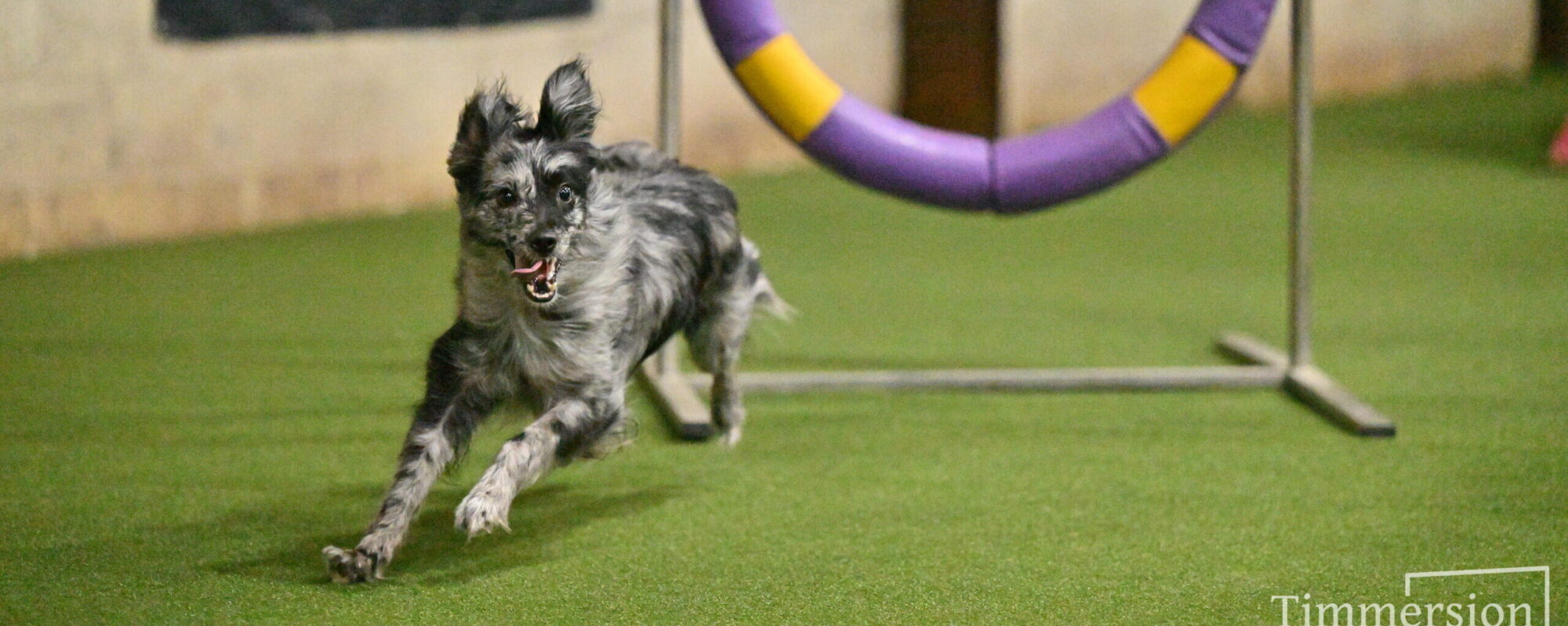 Sounds simple, right? I promise, it is. 🙂
Sounds simple, right? I promise, it is. 🙂
We all have images in our minds about how we want our dog to be, how we want them to work with us, and so on. We wonder how can we achieve this ‘dream image’ of training and running with our dog. In agility and dog training, shaping is often used to develop behaviors, so why not use the same concept to shape the bigger picture, too? Shaping is a powerful tool. By using rewarding (read: reinforcing) one can ultimately shape their dog towards success.
Humans love to do things perfectly. Like, when our dog is doing amazing, they nail their contact, have a tight wrap, find and drive into a challenging weave entry and so on. We want to keep this ‘perfect chain’ going and finish the sequence successfully. The adrenal that comes with that along with the pure bliss of satisfaction. “We did it!!” It feels great in the moment, but moments pass and we may not see those glimmers when we run our dog next. What went wrong we wonder: My dog ran perfect last week. This is especially true for those with soft dogs or dogs who need a little extra encouragement. Too long without rewards will dim a softer dogs fire and and in contrast, will frustrate a higher drive dog. Neither of which is setting the dog up for success. A higher reward rate will only encourage a dog, build their excitement to work with their handler and want to show those amazing things they can do. So, encourage your dog to do their best and you’ll get more of that: their best.
Retrain your mind to see those ‘We Did It!!’ ah-ha’s as moments of skills, versus completing a chain of behaviors. A chain of behavior is a collection of skills in sequence. By reinforcing the chain-links (skills) one is fundamentally strengthening the whole chain (sequence).
Training is just that- training. I don’t see the word perfection in there. 🙂 Build the little pieces. If you see a glimmer of your end goal, reward it. Sure, it feels amazing when we run together fabulously with our dogs in training, but save those perfect runs and uninterrupted sequences for competitions (or trial preparation). Use training to build onto all those glimmers of beauty and perfect skills- which are building blocks for future sequences. If your dog nails that contact deep and perfect blowing your mind immediately throw a party for them celebrating the brilliance they just showed you. Not only does this build the relationship and connection between handler and dog- it rewards the dog for that they just did. And, Rewarding Is Reinforcing. 😉
Those baby steps will become great strides. Quality and consistency will add up. So, be mindful of the quality and consistency of rewarding you give your dog in training to reinforce future behaviors. Reinforcing the little bits will solidify those skills for the long-run. Think of rewarding as telling the dog ‘hey, I liked that thing you just did, you are awesome’. This becomes a communication between the dog and handler. So, when a team does run full courses in sequence they will see those incredible and connected moments of success because the dog understands what to give.
And of course, enjoy the journey. 🙂 The ‘Dream Team’ is in there. Reinforce the steps to get there and You will be Rewarded.

Other PYRWILD training articles:
🐾A Startline Sermon
🐾Building engagement and confidence by training beyond the agility field – an Aginotes Interview
🐾Problems with US agility



You must be logged in to post a comment.